GRAFFITI AND STREET GANGS IN NEW YORK

Graffiti and street gangs in New York
Street art and graffiti are an inseparable part of the wandering experience in New York City. But the graffiti in the major ’emerging’ neighborhoods, such as Bushwick, Harlem and Lower East Side, is much more than exposure to a kicking street art scene. A tour of these neighborhoods tells the story of the city from other points of view – not New York as the symbol of Westernity and the “center of the world,” but the story of people, class conflicts, a cultural encounter charged between immigrants and veteran residents and their assembling battles in the face of the nascent future, Of the last strongholds of authenticity to market forces and gentrification.
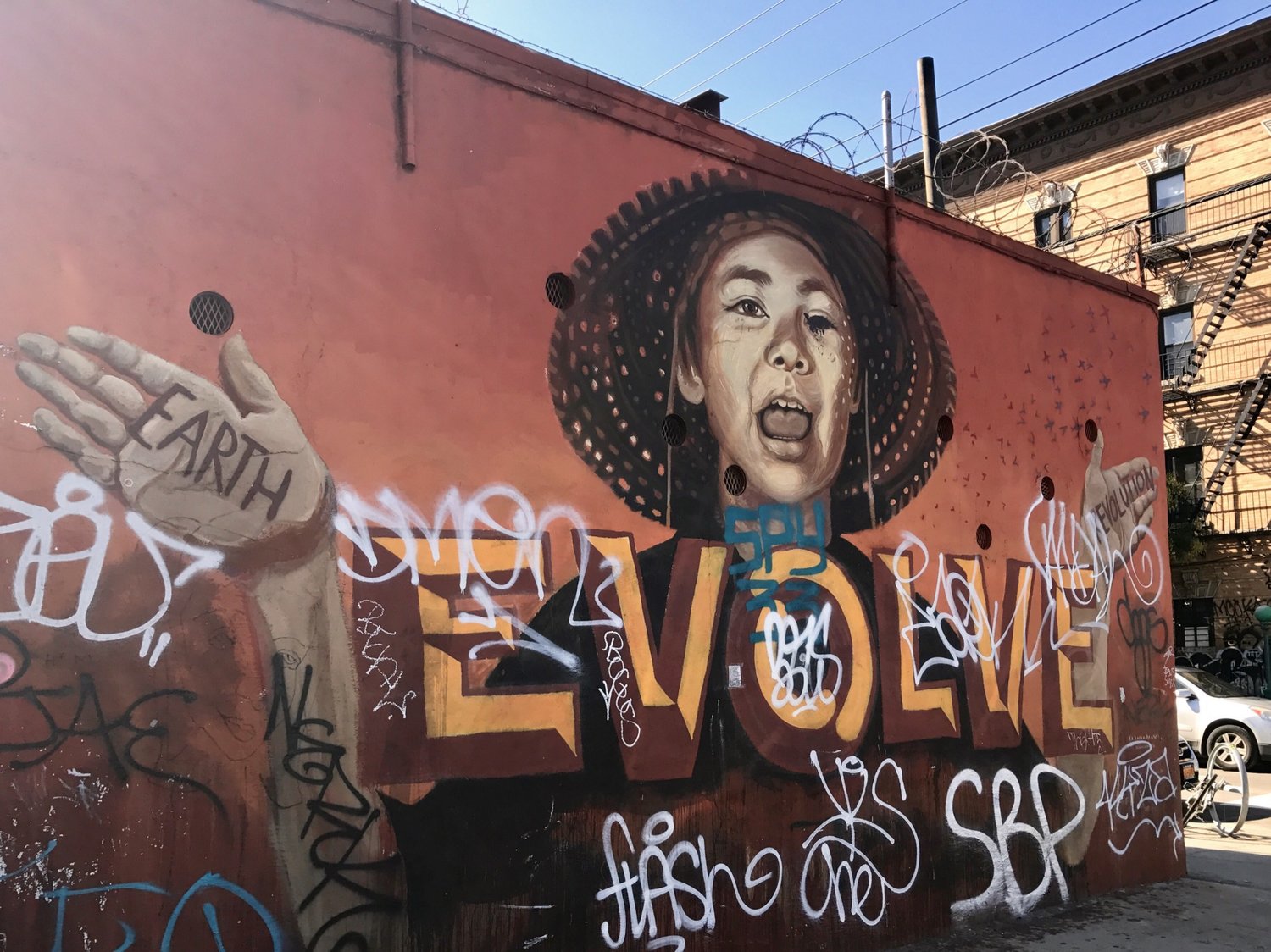
Leverage, 2014
Walking independently in the colorful streets, it is difficult to understand the ground swarming from below and the street as a battlefield full of emotions, interests, nostalgia and a struggle for culture and identity. The eye is drawn naturally to the spectacular frescoes that sometimes cover entire buildings from the roof to the sidewalk, but in the folds and cracks of the street, hidden corners, lies another graffiti scene, older, authentic – a secret language of symbols, codes, and messages. No … they did not disappear under the magic wand of Giuliani, Mayor of New York 1991-2001. Although they have been pushed out of the rich and underpowered areas, but despite the force and determination of the NYPD, their living spaces, mainly in Brooklyn, Queens, Bronx, and Harlem, Manhattan, still exist.
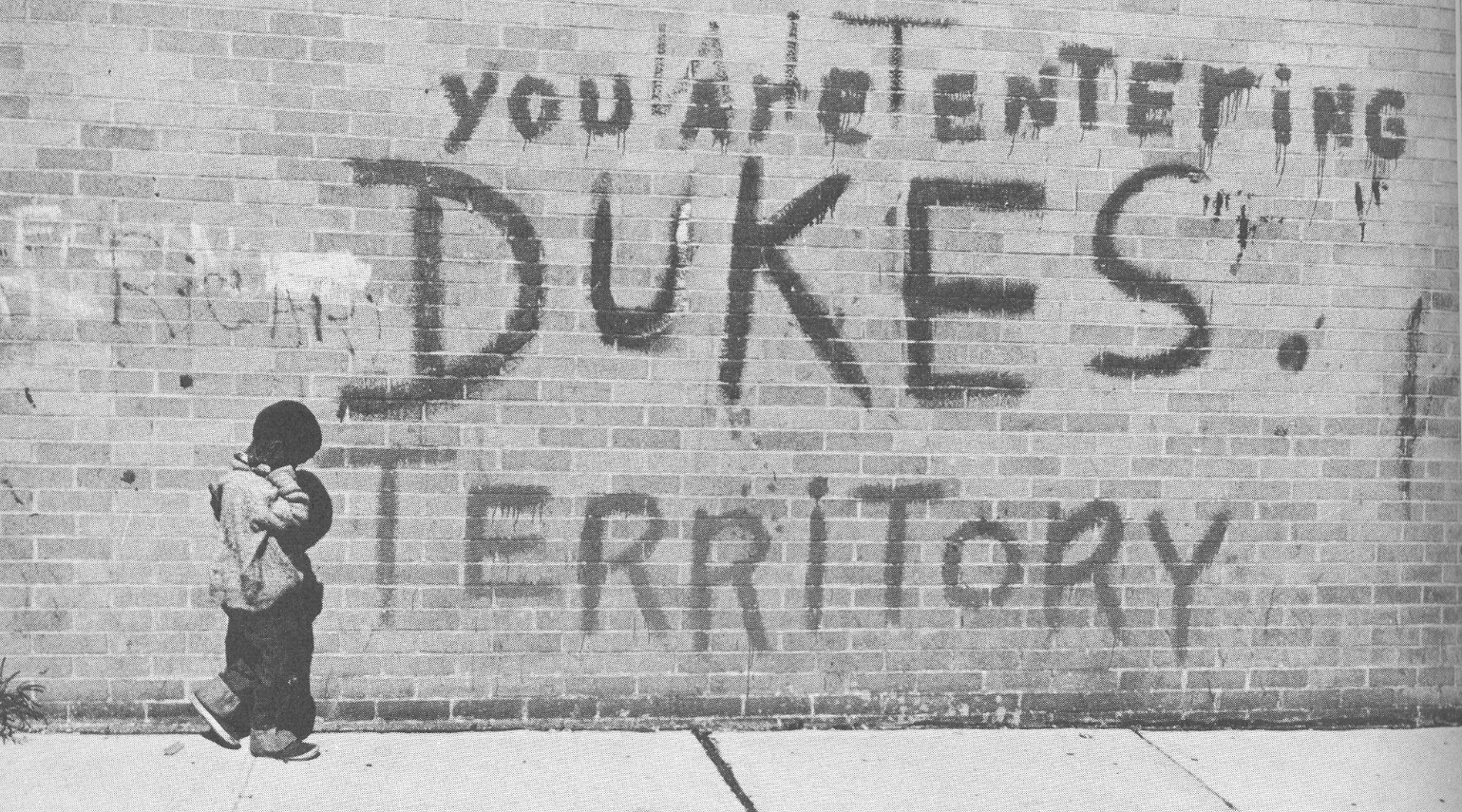
Graffiti gangs from the 50s in Harlem
There is evidence that gangster gangs existed in New York as early as the 1950s, and in Los Angeles graffiti gangs developed in the 1960s, between gangs of BloodSand, Crips, Nortennos and others and soon spread to other US cities. The language of the street youth is coming to New York from Philadelphia – after the first tagger, Cornbread, a high school student who in 1967 wanted to impress a girl and started to bomb the streets with tags, but graffiti remained under the radar of public consciousness until 1971 when the New York newspaper Times published an article about a mysterious tagger named Taki 183. The article on Taki 183, a boy from Harlem, son of immigrants from Greece, Language for the first time the genre and actually created the distinction between gang graffiti and other ‘graffiti’ that the 1960s was an expression of the ‘transparent’ – teenagers, American citizens in ghetto towns.
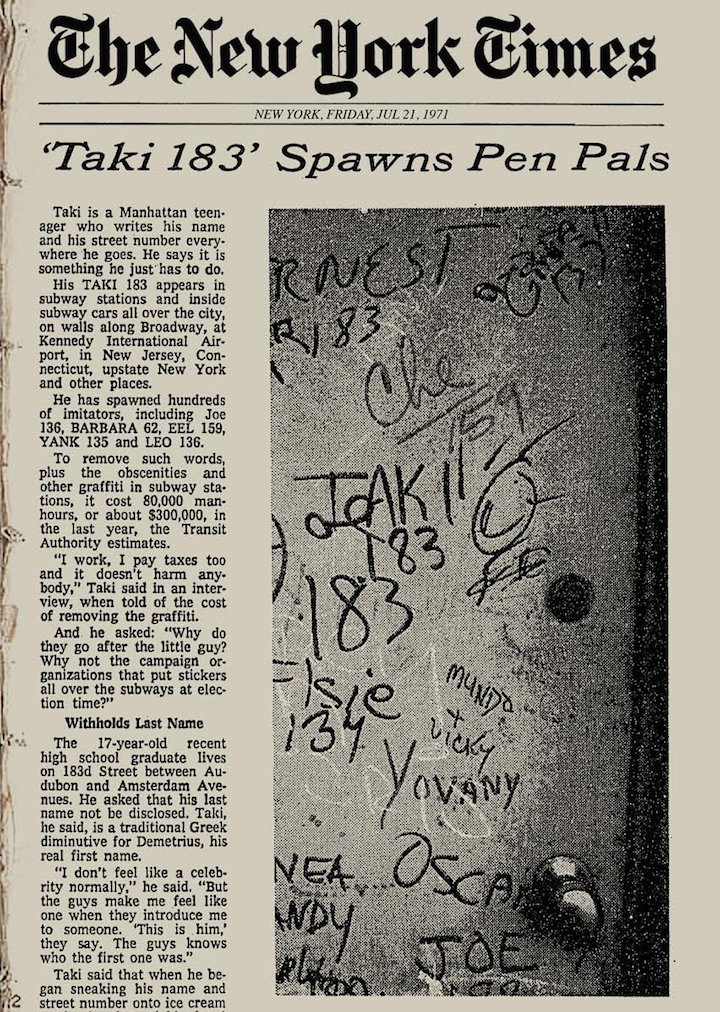
Taki
Graffiti gangs sometimes look to the inexperienced eye as ugly, noisy, and corrupting property, but it is a language for everything – the language of street gangs. The graffiti of the street gangs has three main functions: glorifying the name of the gang and its reputation is perhaps the most important – on which the identity of the gangs is based and their ability to recruit new members. Territory is another element – the gangs use graffiti to mark their territories and to mark claims for new living areas and expand their activities. Their presence on the street creates the deterrent power of the gangs … and their power of attraction.
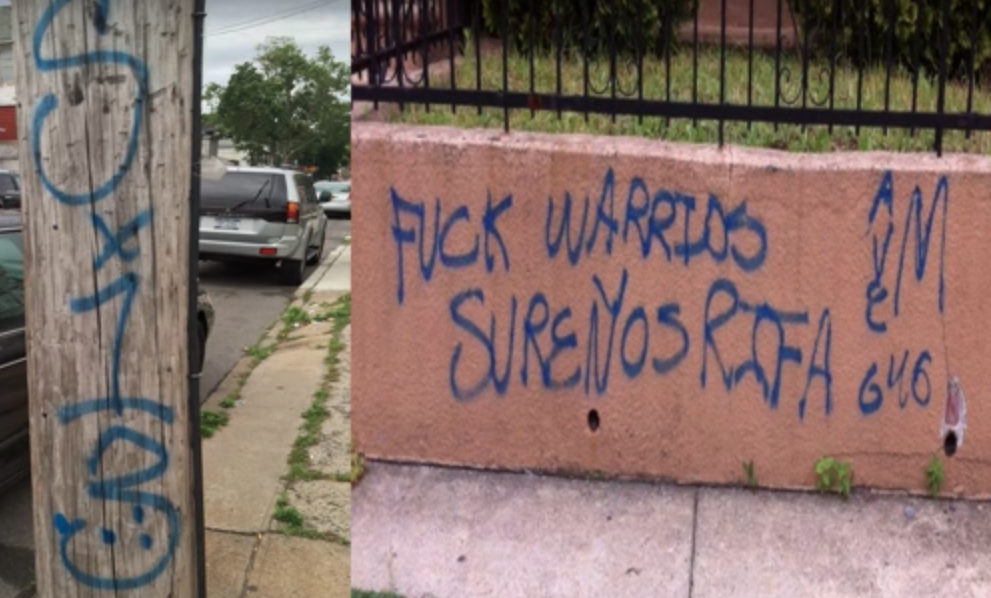
“Tagging” entire street gangs in Brooklyn
The third aspect is the communication between gang members and rival gangs. Graffiti is used to convey messages, usually threatening to deter or respond to trespassing, dishonor, breach of a cease-fire, or breaking the status quo between neighboring gangs. The police are constantly monitoring and researching to decipher the language of graffiti, gang symbols and messages encoded to understand the terrain, to preempt a strike, and to react effectively and neutralize struggles when they only develop and become a bloody street war. The gangs have even developed their own alphabet – a sign language by which they communicate without betraying themselves and their intention.
The gang symbols are found not only on walls in the streets, but tattoos on the bodies of gangs of inexperienced eyes look like ordinary tattoos. They are a sign of belonging to a gang acquired by proving loyalty, blind obedience to the leader and a proven contribution to the agenda of the gang. Veteran gang members will hide the tattoos so as not to attract the attention of the police, but new friends, young people who need to prove themselves and build their reputation, will demonstrate their belonging and expose the tattoos even at the cost of sitting in jail.
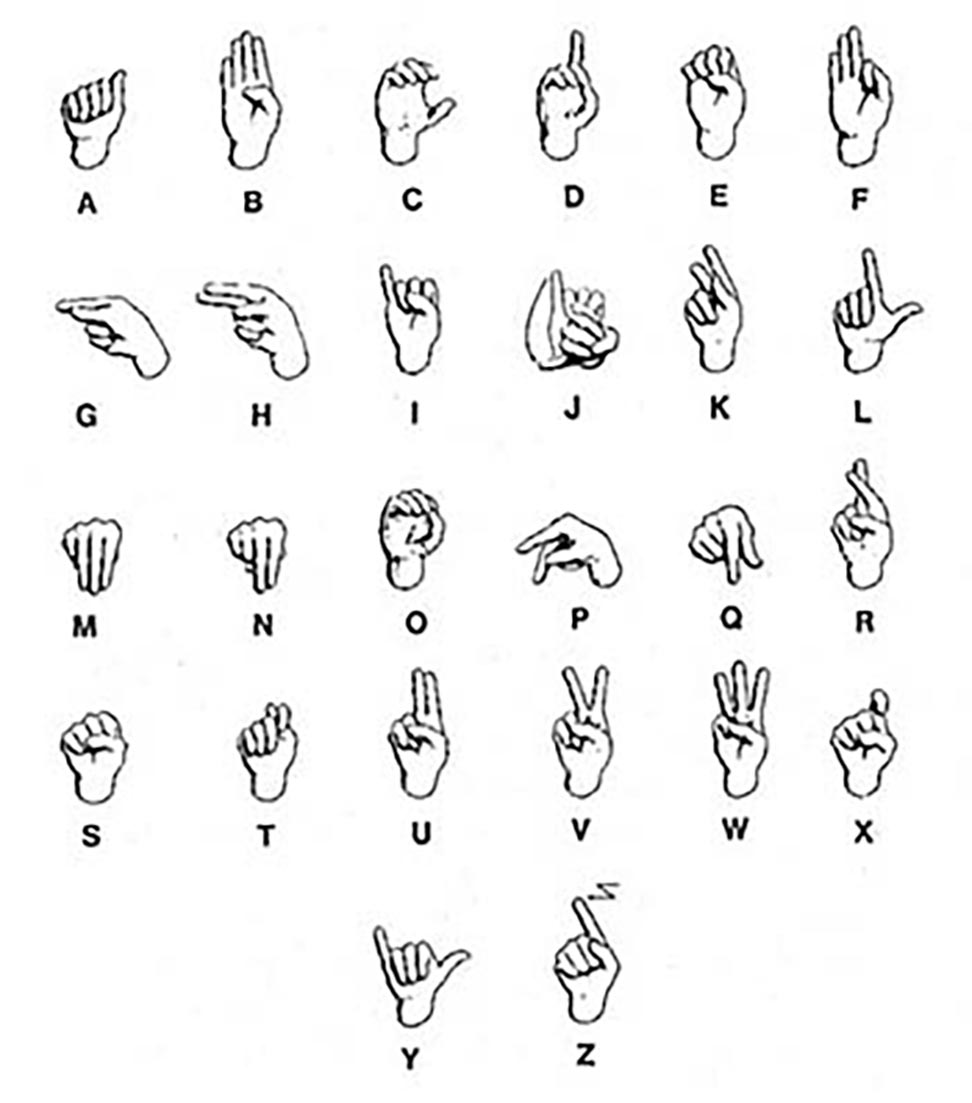
Alphabet gangs
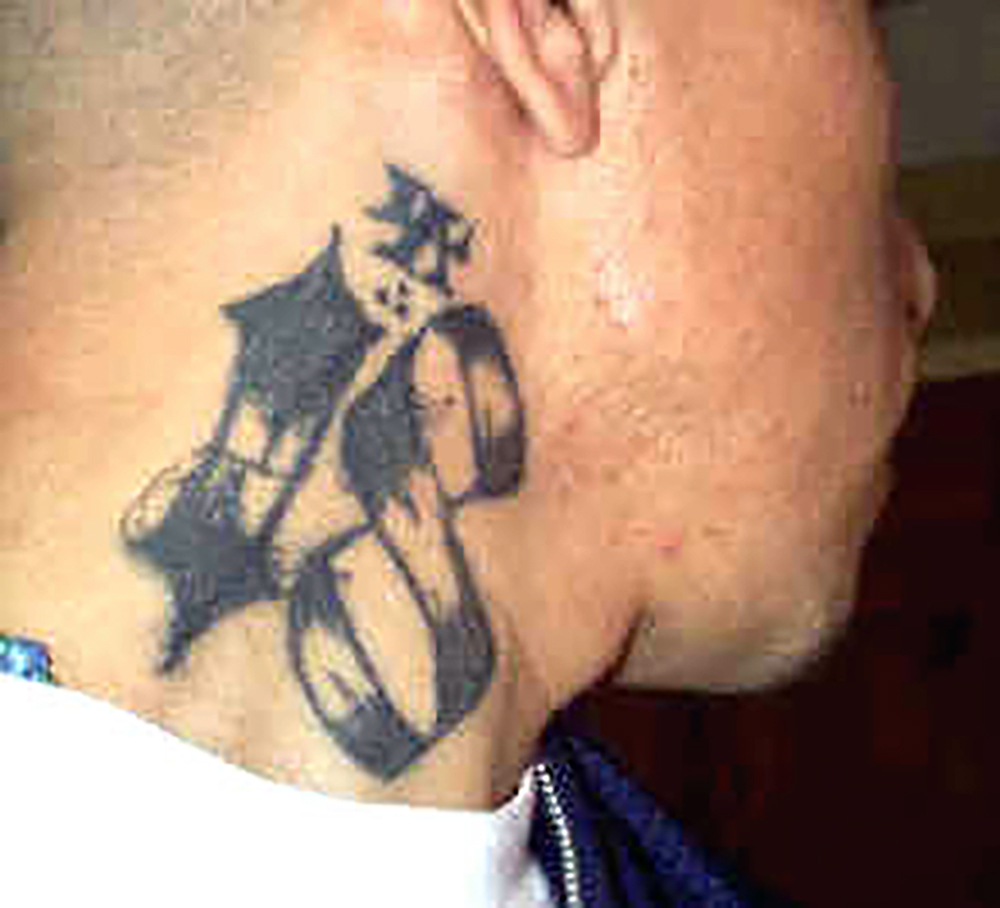
Tattoo of a gang member from New York
WHAT ARE THE STYLISTIC FEATURES OF GRAFFITI?
It is easy to distinguish between art graffiti and crime graffiti – street art that many refuse to see as ‘graffiti’ and give it other names like ‘post-graffiti’, street art, murals etc. There is art visibility for everything. Graffiti artists are often graduates of art schools and demonstrate in their work the skill, content, and quality that puts them in terms of level of paintings in the center of the mainstream of the art world, with the obvious difference that their work is displayed on the street and end to decay and not be preserved. Graffiti has two main categories: text artists and painting artists. The graffiti of the criminal world is not painting, certainly not complex. It is easy to observe the observation of a mural that does not belong or was created by a street gang. However, as opposed to graffiti, text graffiti is very similar in appearance to that of the gangs’ graffiti. The main feature of tagging – writing names, code names, and indecipherable personal symbols – exists in both genres.
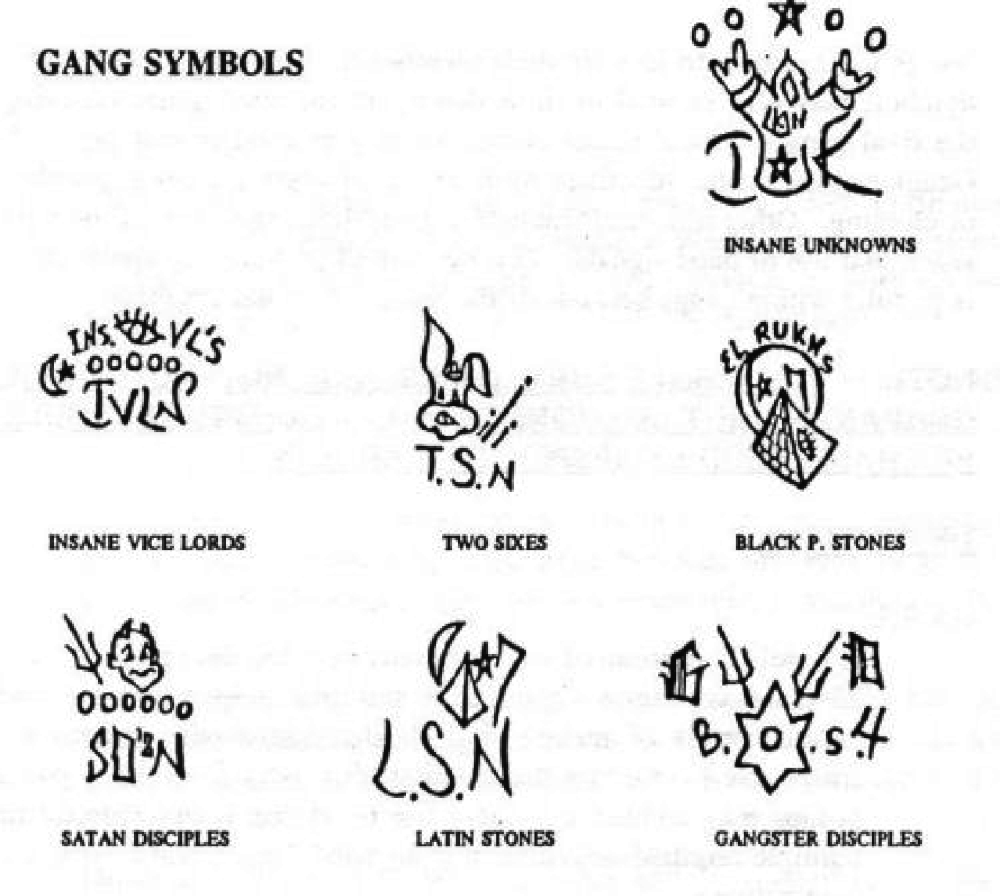

Graffiti Lines
There are several suspicious signs that make it possible to identify gang graffiti: one is the arrow – the arrows are often attached to the gang symbol and their direction tells the situation in real time: a down arrow means that it marks a gang territory to the block where the arrow is located. Such graffiti usually transmits calm, business as usual and a status quo between gangs. When the arrow is parallel to the floor and at the beginning of a block, it also marks ‘This block is mine’, but an arrow parallel to the sidewalk at the end of a street pointing to the next block is another story … This is a claim to new territory by a gang – and a declaration of war that can develop into battles A violent street between rival gangs.
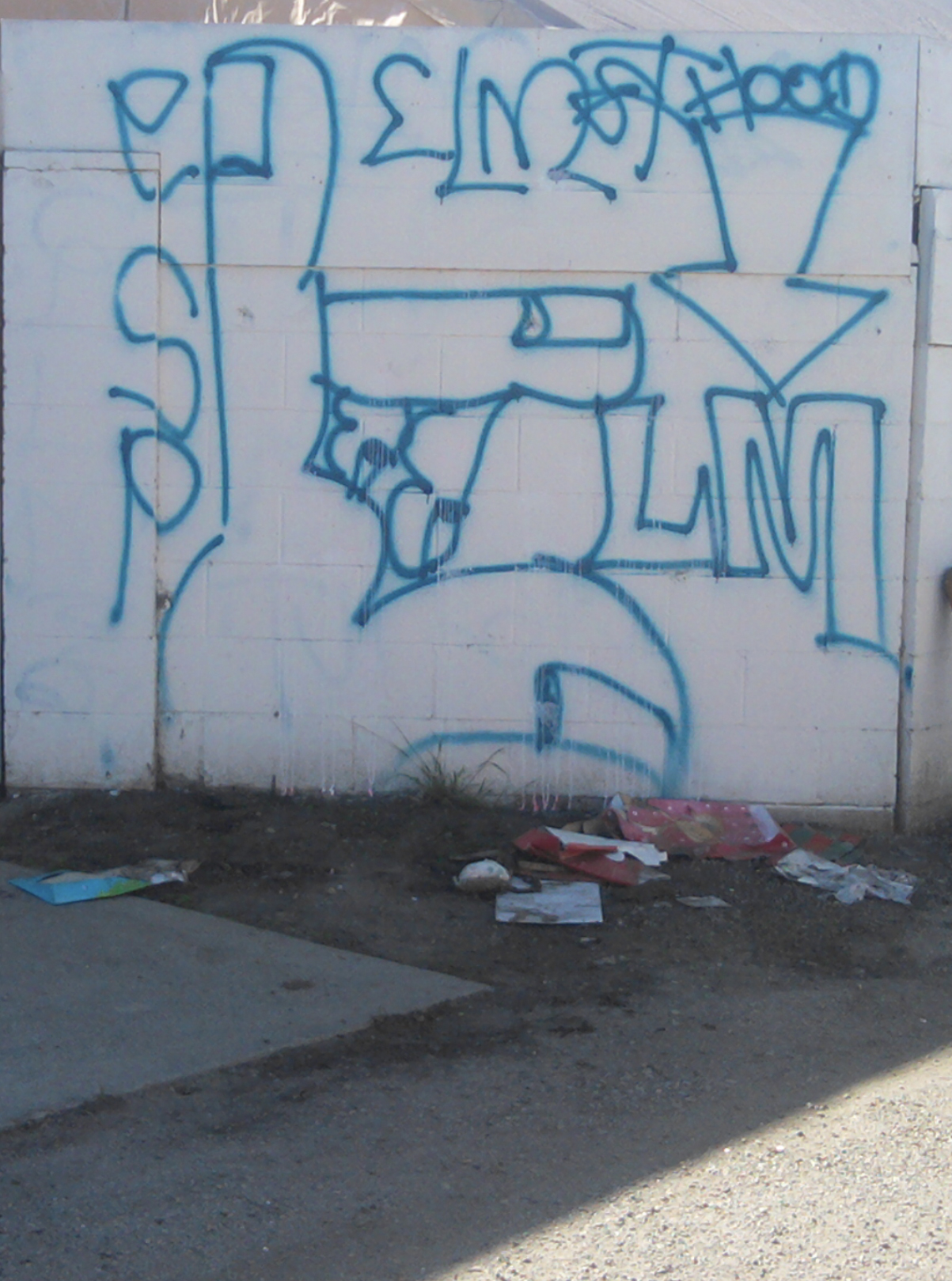
Graffiti of a street gang in Brooklyn
Another sign of tension and struggles in the making, or are already underway, is the deletion of a gang symbol, a deletion made by members of another gang. Deletion, as well as the success of a rival gang member to infiltrate the opponent’s territory and erase his symbols, is a provocation and a violation of gang honor and requires a response.
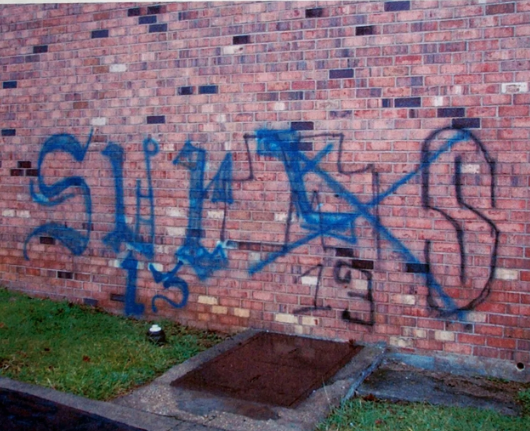
It is important to say that passersby are not targets of violence by the street gangs. The main friction is between rival gangs. Unlike in the second half of the 20th century, today at the end of the second decade of the 21st century, the tours of the Brooklyn, Manhattan and Bronx ghetto neighborhoods are considered as safe as anywhere else, and the fascinating graffiti scene we have talked about here gives it a unique New York experience.
